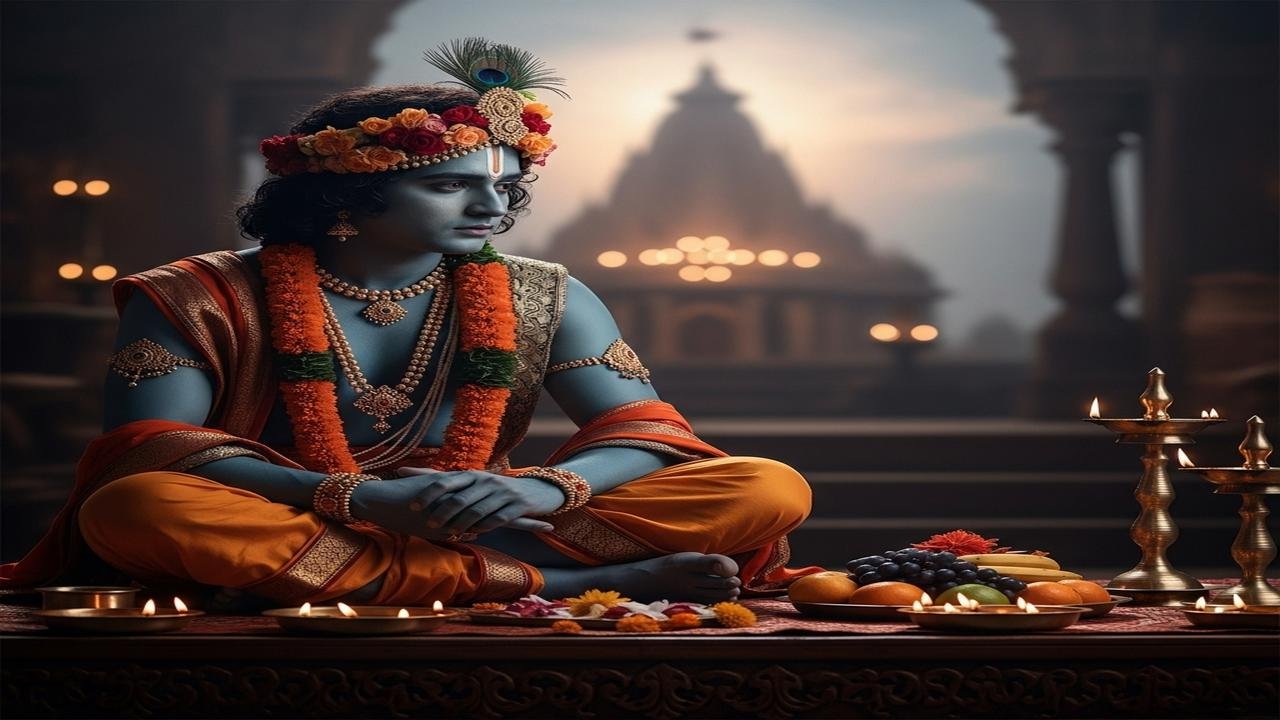Krishna In The Bhagavad Gita On Worship Of Other Gods 7.20-23

Context: Krishna’s teaching in the Gītā
In the Bhagavad Gītā Krishna addresses devotion, action and knowledge across several chapters. He directly explains why many people worship deities other than the Supreme in passages such as Gītā 7.20–23 and 9.23–24. The basic point Krishna makes is descriptive rather than purely condemnatory: people who are attracted by material desires and specific needs turn to particular gods for particular results. Their motivation, he says, is often limited by desire and delusion rather than by full spiritual vision.
What Krishna actually says (summary of key verses)
- Delusion and desire: In Gītā 7.20–23 Krishna notes that some minds are bewildered by māyā — illusion — and so they worship demigods to fulfil finite desires such as prosperity, children, health or power.
- Different outcomes: He says those worshipping such deities attain the result they seek but remain bound to the world and return when their merit is exhausted.
- Inclusivism: In Gītā 9.23 Krishna affirms that even those who worship other gods are, in a sense, worshipping Him, because all acts of sincere worship in the world ultimately reach the Supreme. Yet in 9.24 he warns that worshippers attached to other deities may go to the deity they worship after death rather than to the Supreme.
How to read this statement
- Krishna offers both theological explanation and pastoral guidance: he explains why people act as they do and points followers toward full devotion (bhakti).
- Gītā commentators note two levels: a descriptive level (what people do) and a prescriptive level (what leads to final liberation).
Different sectarian and philosophical readings
Interpretation varies by tradition, and a respectful survey helps show the range.
- Vaiṣṇava readings: Many Vaiṣṇava commentators treat Krishna as the Supreme. They explain that worship of other gods is valid for limited aims but that ultimate goal is surrender to Krishna. Some schools (e.g., Gaudiya) add that other deities are expansions or agents of the Lord.
- Śaiva and Śākta perspectives: In Śaiva and Śākta traditions, Shiva or Śakti may be seen as supreme. These schools often read the Gītā in ways that allow their own supreme deity to hold the final place, while accepting that Krishna’s remarks describe a general spiritual economy.
- Smārta and Advaita views: Smārta practice (panchayatana worship) and Advaita commentaries emphasize the ultimate non-dual Brahman. From that angle, many deities are legitimate manifest forms of the one reality; the Gītā’s observation is read as an explanation of how limited desire ties devotees to particular forms.
Practical and cultural reasons people worship other gods
Beyond theology, lived religion explains much of the diversity in worship.
- Local and family tradition: Village guardian deities, clan gods and family shrines (kuladevata) shape everyday worship across India.
- Functional needs: People appeal to particular gods for weather, fertility, business success, healing or safe travel—goals that need practical, urgent answers.
- Temperament and affinity: Spiritual teachers describe an ishta-devata — chosen deity — suited to an individual’s temperament. The Bhagavad Gītā also recognises different natures (sattva/rajas/tamas) that influence religious choices.
- Ritual role: Sacrifices, vows and life-cycle rites often specify certain deities or ancestors (pitr) to be propitiated.
- Psychology and comfort: Personal attachment and emotional relief often draw seekers to familiar images and stories.
Ritual logic: reciprocity and short-term goals
Many non-ascetic forms of worship work on a logic of reciprocity: the devotee gives offerings or observes vows and expects specific returns in the visible world. Krishna’s observation that such worship yields measurable results but binds one to the cycle of rebirth reflects this practical sociology of religion. In later Puranic stories, too, gods sometimes act as grants of boons while the Supreme oversees cosmic order.
How this shapes contemporary practice
- Plural devotional life: It is common for people to maintain multiple shrines and devotional practices—one for immediate worldly needs, another for long-term spiritual aims.
- Inclusiveness and respect: Krishna’s tone is corrective rather than dismissive. Many living traditions treat parallel worship as part of normal religious life rather than exclusive error.
- Choice of path: Teachers across schools encourage deliberate choice of an ishta and attention to motive: whether one seeks transient benefits or final liberation.
Practical takeaway
- Recognise the diversity of motives in worship and the layered reasons people turn to different deities—socially practical, emotionally consoling, or spiritually aspirational.
- If you are exploring practice, reflect on your aim: comfort, duty (dharma), social ritual, or liberation. That clarity helps choose forms of worship and teachers.
- Caution: traditional disciplines such as prolonged fasting or intensive breath practices can affect health; consult qualified guidance and a medical professional if needed.
In short, Krishna’s explanation combines psychological insight, ritual anthropology and a theological invitation: worship of other gods can meet real human needs and yield concrete results, but Krishna points to a fuller, unconditional devotion as the path to final freedom. Different schools receive and reframe this teaching according to their own metaphysics, and India’s lived religious landscape continues to hold many valid, coexisting practices.
